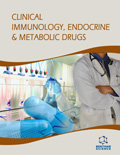Abstract
Introduction: Spasticity is the most important problem in the recovery of a satisfactory function of the upper limb to the patient outcomes of cerebral stroke. Objective of the study is to compare the results in functional recovery in patients treated with botulinum toxin A and occupational therapy and patients treated with botulinumtoxinA, occupational therapy (OT) and functional electrical stimulation (FES) (Ness H-200).
Materials and methods: 36 Patients (middle aged 55.25 ± 6.5) with spasticity of the upper limbs for more than six months and in particular with the involvement of the muscles of the hand. Patients were divided into two groups: Group I underwent botulinumtoxinA-occupational therapy-functional electrical stimulation; Group II underwent botuli- numtoxinA and occupational therapy. All patients were evaluated with the modified Ashworth scale, with the measurement of the passive ROM, the evaluation of the amplitude of the compound action po- tential of the median nerve (registration site in the flexor digitorum superficial) and ARAT test at the time T0 (recruitment and infiltration), T1 (20 days after first infiltration), T2 (3 months after first infil- tration), T3 (four months after first infiltration; we reinjected botulinumtoxinA), T4 (20 days after sec- ond infiltration), T5 (3 months after second infiltration), T6 ( four months after first infiltration; we reinjected botulinum toxin A).
Result: Group treated with botulinumtoxinA-OT-FES showed a statistically significant improvement com- pared to the other group in the evaluation of the passive ROM, in the assessment of spasticity with the modified Ashworth scale, in the reduction of the amplitude cMAP of the median nerve and in the score of ARAT test.
Conclusion: The application of the FES joined to treatment with botulinumtoxinA and OT proves ef- fective synergy for greater functional recovery of the upper limb and the best possible outcomes.
Keywords: Botulinum toxin type A, functional electrical stimulation (FES), myometry, occupational therapy, physiotherapy stroke, spasticity.
Graphical Abstract
 35
35

